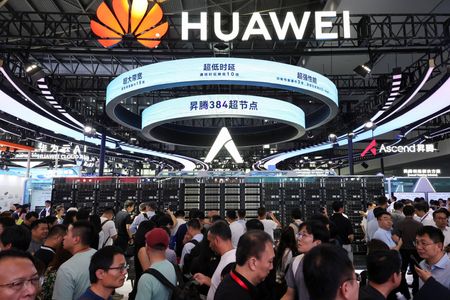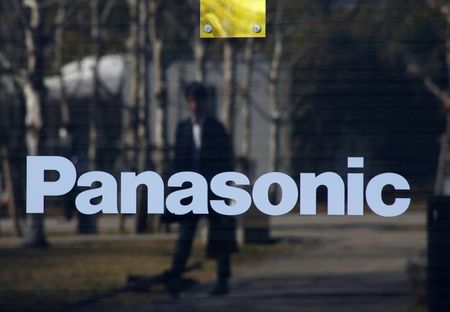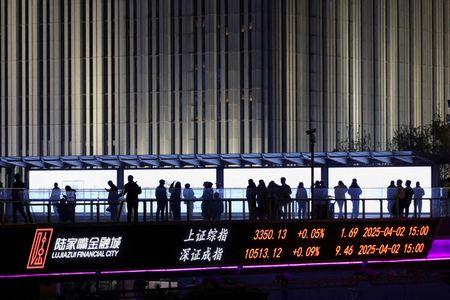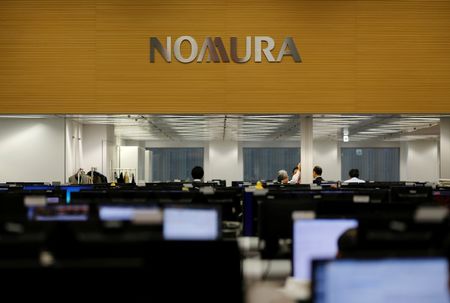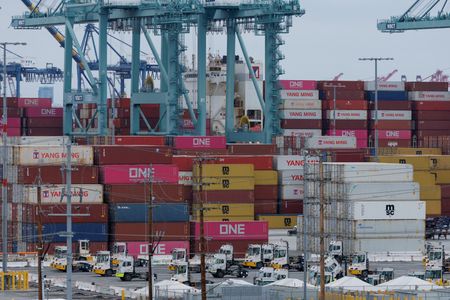By Brenda Goh and Che Pan
SHANGHAI (Reuters) – Huawei said on Thursday it would roll out four new iterations of its Ascend AI chip over the next three years, breaking years of secrecy to reveal its chipmaking progress and ambitions to compete against Nvidia for the first time.
The Chinese technology giant has been one of the key players in leading efforts to develop a domestic semiconductor manufacturing industry, aiming to reduce reliance on a supply chain dominated by the United States.
After the launch of the Ascend 910C in the year’s first quarter, Vice Chairman Eric Xu said the company plans to launch next year two variants of its successor, the Ascend 950, and follow up with the 960 version in 2027 and the 970 in 2028.
“Computing power has always been, and will continue to be, key to artificial intelligence, and even more so to China’s AI,” Xu told the annual Huawei Connect conference in the commercial hub of Shanghai, the company said.
The Ascend 950 chip would be powered by the company’s own proprietary high-bandwidth memory, he said, revealing that it had overcome a key bottleneck China faced in the technology, limited for years to South Korean and U.S. suppliers.
Huawei also plans to roll out new computing power supernodes called the Atlas 950 and Atlas 960, which Xu described as the world’s most powerful, supporting 8,192 and 15,488 Ascend chips respectively.
The chips are successors to the Atlas 900, also known as the CloudMatrix 384, which uses 384 of Huawei’s latest 910C chips.
On some metrics, the Huawei product outperforms Nvidia’s GB200 NVL72, which uses 72 B200 chips, research group SemiAnalysis has said.
Huawei says the system uses “supernode” architecture that allows the chips to interconnect at super-high speeds.
(Reporting by Brenda Goh and Che Pan; Editing by Jacqueline Wong and Clarence Fernandez)

